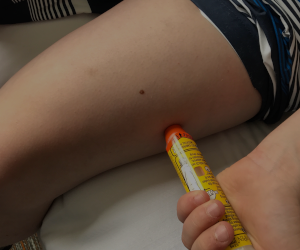Conditions We Treat
Eye and Nasal Allergies
Our environment contains hundreds of substances that can trigger allergy symptoms. Our body unfortunately can mistakenly identify non-harmful substances such as pollens, molds, pets and dustmite as dangerous items which then triggers allergy symptoms. You could experience runny nose, stuffy nose, sneezing, itchy/watery eyes, dark circles under the eyes, coughing, itchy throat or itchy ears.

Asthma
Asthma is a treatable condition that affects the bronchial tubes in your lungs. Asthma is due to a tightening of the muscles that surround the small breathing tubes in your lungs and then spasm. This can be triggered by a variety of causes such as exercise, weather changes, allergies (pollens, dustmite, cats and dogs) or irritants in the air such as fumes or gases.

Atopic Dermatitis (Eczema)
Atopic dermatitis is a condition that affects over 30 million Americans. This results in a red, itchy, dry rash with skin that is overall very sensitive. Atopic dermatitis is most common in infants but can also be present in children and adults. Many patients have something that can trigger their atopic dermatitis such as something in the environment. More rarely, we find that a food can trigger their atopic dermatitis.


Contact Dermatitis or Skin Allergies
Contact dermatitis is when your skin develops a rash when it comes into direct contact with something that you are allergic to. This could be jewelry, fragrances, latex, soaps, poison ivy or dyes. The skin can become red, bumpy, scaly, itchy or maybe even swollen.
Hives (Urticaria and Angioedema)
Urticaria, also known as hives, is a rash that can affect the entire body and appears as itchy, red, swollen welts. Hives can come and go lasting minutes or hours in one particular area of the body but can affect patients for months or years. Acute urticaria is when a patient has had hives that last six weeks or less and chronic urticaria is when someone has experienced hives for more than 6 weeks. Some patients may find that their hives are due to foods, medications, insect stings, stress or even common viral infections (such as the common cold, ear infections, strep throat, or the flu). Hives can also sometimes be due to rubbing/scratching, either hot or cold temperatures, pressure or sun exposure.


